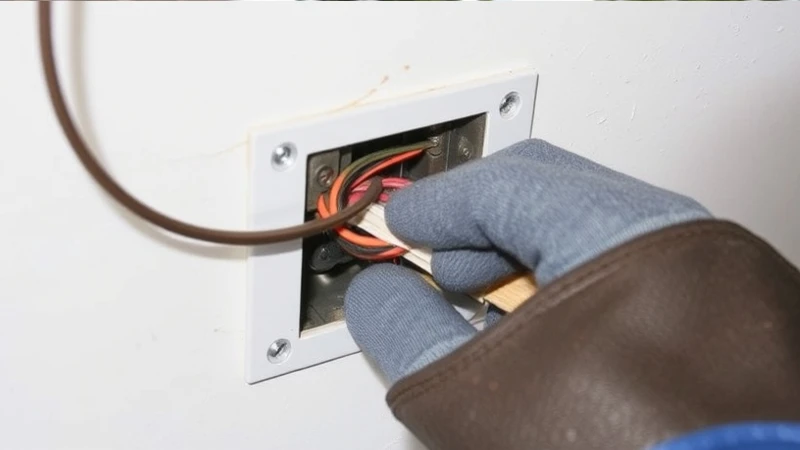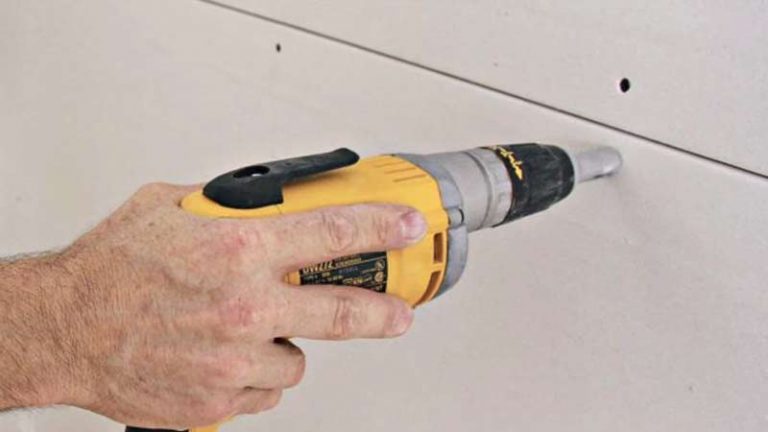Running Wire Through a Top Plate: A Comprehensive Guide
Running electrical wire through a top plate is a common task in both new construction and renovation projects. The top plate, part of a wall’s framing, is a horizontal member that sits on top of the wall studs and supports the ceiling or roof structure above.
Properly routing electrical wires through the top plate ensures that the installation is safe, efficient, and compliant with building codes. This article will guide you through the process of running wire through a top plate, including the necessary tools, step-by-step instructions, safety considerations, and best practices.
You'll Learn About
Understanding the Top Plate and Its Role

What is a Top Plate?
The top plate is a crucial element in the framing of a wall. It consists of one or two horizontal boards that cap the tops of the vertical studs. The top plate helps distribute loads from the roof or floor above and provides a secure base for attaching ceiling joists or roof rafters.
Importance in Electrical Wiring
Running wires through the top plate is essential when routing electrical circuits from one level of a building to another. Properly drilling and protecting the wires ensures they are safe from physical damage and meet electrical codes.
Tools and Materials Needed
Essential Tools
- Drill with auger or spade bit
- Measuring tape
- Stud finder
- Fish tape or wire puller
- Utility knife
- Safety glasses
- Dust mask
Materials
- Electrical cable (e.g., Romex)
- Electrical boxes
- Cable staples or clamps
- Nail plates
- Fire-resistant caulk or putty
- Marker or pencil
Step-by-Step Guide to Running Wire Through a Top Plate
Step 1: Plan the Route
- Identify the Path: Determine the most efficient route for your wire. Plan to minimize bends and obstacles to make pulling the wire easier.
- Locate the Top Plate: Use a stud finder to locate the top plate in the wall where you will drill the hole.
Step 2: Prepare for Drilling
- Measure and Mark: Measure the distance from the edge of the top plate where you need to drill. Mark the drilling spot with a pencil or marker.
- Check for Obstacles: Ensure there are no pipes, ducts, or other obstructions in the wall cavity that could interfere with drilling or wiring.
Step 3: Drilling the Hole
- Select the Bit: Choose an appropriate drill bit size. Typically, a 3/4-inch to 1-inch bit works well for most residential wiring.
- Drill the Hole: Position the drill perpendicular to the top plate and drill a hole through the center. Keep the drill steady to avoid creating a crooked hole.
Step 4: Running the Wire
- Feed the Wire: Push the end of the wire through the drilled hole. If the hole is not directly above an electrical box, you may need to fish the wire through the wall cavity.
- Use Fish Tape: If needed, use fish tape to guide the wire through the hole and down the wall to the desired location.
Step 5: Securing the Wire
- Attach to Electrical Box: Secure the wire to the electrical box using cable clamps or connectors. Ensure that enough wire extends into the box for proper connections.
- Staple the Wire: Use cable staples or clamps to secure the wire within 12 inches of the box and along its route, ensuring it is taut but not overly tight.
Step 6: Protecting the Wire
- Install Nail Plates: Place nail plates over the drilled hole in the top plate to protect the wire from nails or screws that could be driven through the wall.
- Seal the Hole: Apply fire-resistant caulk or putty around the wire where it passes through the top plate to maintain the fire rating of the wall.
Safety Considerations
Electrical Safety
- Turn Off Power: Always turn off power at the breaker box before working with electrical wiring.
- Check for Live Wires: Use a voltage tester to ensure no wires are live before drilling or cutting.
- Follow Code Requirements: Adhere to local building and electrical codes for wire installation, protection, and securing methods.
Drilling Safety
- Wear Safety Gear: Always wear safety glasses and a dust mask when drilling to protect against debris and dust.
- Drill Steadily: Use steady, controlled pressure when drilling to avoid sudden movements that could cause injury or damage.
Best Practices for Running Wire Through a Top Plate
Plan Ahead
- Pre-Plan the Layout: Plan the entire electrical layout before drilling to avoid unnecessary holes and to ensure efficiency.
- Label Wires: Label both ends of the wire to keep track of circuits and connections.
Use Quality Materials
- Select the Right Cable: Use appropriate wire gauge and type for the circuit’s load and application.
- Use Durable Hardware: Use high-quality staples, clamps, and nail plates to ensure long-term durability and safety.
Maintain Accessibility
- Future-Proofing: Consider future electrical needs and run additional wires or conduit where possible to simplify future upgrades or changes.
- Document the Layout: Take pictures or make notes of the wire routes for future reference during renovations or troubleshooting.
How to Run a Wire Through a Wall
Running wires through a wall requires precision and the right tools. Proper preparation ensures that the wiring is safe and functional. A fish stick is essential for pulling wires through walls.
Use the Fish Stick for Wire Fishing
A fish stick is a flexible, sturdy tool for pulling wires. Insert the fish stick into the first hole in the wall. It will help guide wires through spaces, even if insulated.
Push the fish stick through the low-voltage box at the bottom. Pull it out at the top low-voltage box or exit. This allows for a smooth path for wiring without creating obstructions.
Fish sticks are ideal for both new construction and retrofitting projects. They help minimize damage to walls while making the process simple. Fish sticks save time by eliminating unnecessary drilling and extra cutting.
Drill Appropriate Holes
Before running the wire, determine the correct entry and exit points. Drill small pilot holes through the drywall for the wire path. Use a level or stud finder if you’re avoiding studs or obstructions.
Ensure that the holes align with the low-voltage boxes or planned wiring areas. Drill holes at proper angles to ensure smooth wire navigation. Drilling clean, accurate holes is critical for a professional installation.
Check that the holes are clear of debris, insulation, or obstacles. Use protective gear when drilling to maintain safety. Always follow local codes when determining where wiring runs through walls.
Pull the Wire Carefully
Once the fish stick is in place, attach the wire securely. Feed the wire through the space using the fish stick’s pulling strength. Keep the wire straight and avoid sharp angles to prevent damage.
When pulling the wire, go slowly to ensure it doesn’t snag. Test the path by gently tugging to ensure it runs smoothly. Avoid pulling excessively, as this could damage the wire or cause disconnections.
After the wire runs through completely, disconnect it from the fish stick. Ensure that the wire extends evenly on both sides of the wall. Smooth and steady pulling avoids unnecessary wire damage or future troubleshooting.
Manage Insulation Challenges
Walls may contain insulation that can complicate running wires through them. Fish sticks make it easier to pull wires even when insulation is present. Carefully insert the fish stick into the path behind the insulation.
If insulation becomes too dense, use specialized tools or techniques. Avoid forcing wires through spaces, as it can damage the wire coating. Take your time to ensure proper navigation without creating gaps in insulation.
Insulation helps maintain energy efficiency, so avoid tearing or displacing it. Managing these areas carefully ensures safety and preserves the structure’s performance. Keep insulation intact during every stage of running wires.
Test the Wire Before Securing
After running the wire, test the connection before closing everything up. Use a continuity tester or voltage tester to verify proper connections. This ensures there are no wiring issues before sealing the wall.
Check that both ends of the wire are intact and connected. Double-check that the fish stick hasn’t caused any snags during installation. Proper testing eliminates future headaches related to wiring faults.
Once the wires are confirmed to be functioning, you can proceed. Secure all connections properly to ensure long-lasting results. Testing the wires reduces risks and minimizes unnecessary troubleshooting costs.
Seal and Finish the Installation
Once everything is tested and confirmed, seal the holes appropriately. Use drywall patches or sealant to ensure the wall is airtight. This prevents drafts, pests, and debris from entering the wall.
Install low-voltage boxes or covers in their respective positions. Ensure everything aligns properly and that the wall looks neat and professional. Proper sealing provides both safety and aesthetic appeal to the finished project.
Always dispose of any debris, leftover wire, or materials safely. Keeping the workspace clean ensures safety and a professional finish. Once finished, the wall should look clean, tidy, and properly installed.
Key Steps and Tools for Running Wire Through a Top Plate
| Step | Description | Tools Needed |
|---|---|---|
| Plan the Route | Identify and mark the wire path | Measuring tape, marker, stud finder |
| Prepare for Drilling | Measure, mark, and check for obstacles | Measuring tape, stud finder, marker |
| Drill the Hole | Drill a hole through the top plate | Drill, auger or spade bit, safety gear |
| Run the Wire | Feed or fish the wire through the hole | Fish tape, wire puller, utility knife |
| Secure the Wire | Attach to electrical box and staple along the route | Cable staples or clamps, hammer |
| Protect the Wire | Install nail plates and seal the hole | Nail plates, fire-resistant caulk or putty |
By following these guidelines and utilizing the appropriate tools and techniques, you can successfully run wire through a top plate, ensuring a safe and professional electrical installation in your home.
Conclusion
Running wire through a top plate is a common but crucial task in residential electrical installations. By understanding the role of the top plate, using the right tools and materials, and following detailed steps and safety practices, you can ensure a safe and effective installation.
Proper planning, quality materials, and adherence to best practices will help you achieve a reliable and code-compliant electrical system.
Running wire through a top plate requires careful drilling to avoid structural damage. For more electrical tips, explore our articles on connecting 10-3 to 10-2 wire and white Romex 12-2. If you’re tackling other projects, like framing windows side by side, proper planning ensures safety.



